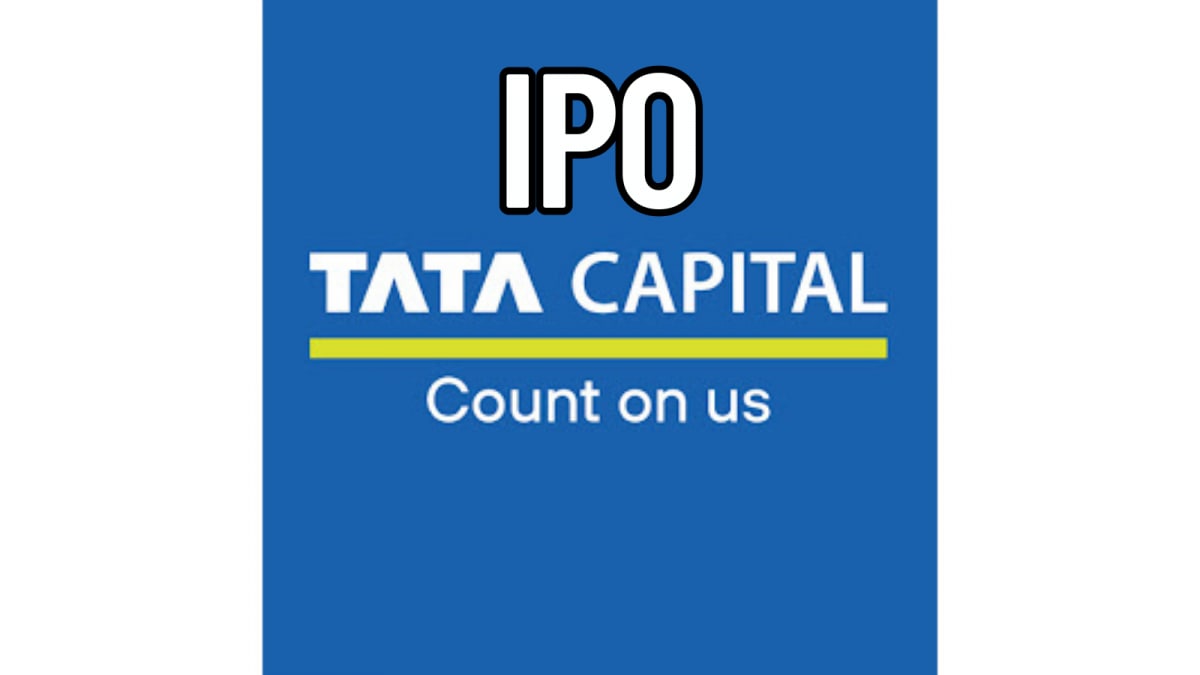Business
Tata Capital, LG Electronics Among 7 Issues To Raise Over Rs 30,000 Crore On Dalal Street

New Delhi: This week is going to be huge for the Indian stock market as seven companies are coming out with their initial public offerings (IPOs). Together, they are expected to raise around Rs 30,000 crore, which could make it one of the biggest fundraising weeks ever on Dalal Street. The list includes major names like Tata Capital and LG Electronics, along with a mix of public sector firms and smaller companies.
The Tata Capital IPO will open on October 6, with a price range between Rs 310 and Rs 326 per share. The company plans to raise Rs 15,512 crore, which includes both new shares and an offer for sale from existing investors. It is expected to attract strong demand from both institutional and retail investors, given the Tata brand’s strong market reputation.
Right after Tata Capital, LG Electronics India will launch its IPO between October 7 and 9. The issue will be priced between Rs 1,080 and Rs 1,140 per share. This IPO is purely an offer for sale, meaning the parent company is selling part of its stake in the Indian unit rather than issuing fresh shares. Market analysts expect good investor interest since LG is a household name and a leading player in the consumer electronics space.
Apart from these big offerings, a few other IPOs are also lined up. Rubicon Research will open its issue on October 9, planning to raise around Rs 1,377 crore. Public sector companies such as Canara Bank, Canara Robeco AMC, and Canara HSBC Life Insurance are also expected to hit the market this week. Additionally, a smaller company called Mittal Sections from the SME segment aims to raise about Rs 52.9 crore.
This lineup makes the coming week one of the most active in India’s IPO history. Although some weeks have seen a higher number of IPOs, very few have raised this much money. The only comparable event was the massive Hyundai Motor India IPO earlier this year, which alone raised nearly Rs 27,800 crore.
Most of these IPOs will open for subscription between October 6 and 10, and listings are expected soon after. A total of about 28 companies, including several small and mid-sized firms, are set to debut on the exchanges next week. This includes names like WeWork India, Advance Agrolife, and Pace Digitek.
Overall, the upcoming week will be a busy one for investors, with big-ticket IPOs and strong activity in both the mainboard and SME markets. It could also test market liquidity and investor appetite as companies rush to take advantage of positive sentiment before Diwali.
Business
Why is this Budget so important for the UK economy?

Next week, the Chancellor will reveal the Government’s latest set of tax and spending policies as she also outlines her ambitions for the economy under the Labour Government.
The state of the economy is the key focal point ahead of the Budget, amid criticism from industry over the impact of the Government’s first Budget last year.
The state’s official forecaster will also lay out its key projections over how the economy is set to fare over the coming years, with fears that it could present a gloomy outlook in the short term.
Here the PA news agency looks at the importance of this Budget for the economy:
– What is the backdrop of the Budget?
The UK economy started the year with positive growth, with GDP (gross domestic product) rising by around 0.7% over the first quarter of the year.
Nevertheless, this had been boosted by stronger trade ahead of expected tariffs and came amid an increasingly uncertain global economic backdrop.
This growth has steadily slowed down as the year progressed, with the Office for National Statistics (ONS) reporting growth of 0.3% in the second quarter and 0.1% in the third quarter of the year.
The dip has come amid declines in the production sector as well as slower growth in the services sector.
Meanwhile, inflation has been elevated over the past year, striking a peak of 3.8% in July, August and September.
It dipped slightly last month – although at a slower rate than expected – but also comes amid a backdrop of falling wage growth.
Consumer finances had been supported by stronger wages but real wage growth has slowed significantly in recent months because of pressure in the labour market.
Unemployment has also lifted, striking a four-year-high of 5% in the three months to September.
– Why is the last budget important?
Weak hiring, slowing wage growth and price inflation have all been partly linked to policies which came into force following the Labour Government’s first budget last year.
The budget led to higher taxes and labour costs for many businesses when the policies came into force in April this year.
Firms were affected by the increase in the national minimum wage, higher National Insurance Contributions (NICs), reduced business rates discounts and other taxes, such as a new packaging tax.
The Bank of England highlighted that the increase in NICs and the minimum wage partly contributed to higher food price inflation earlier this year as impacted firms passed some of this on to their customers.
– What is the view of businesses ahead of the Budget?
Businesses and trade bodies have stressed that they came under pressure from the previous budget and have urged the Government to avoid hitting them with further increases.
Industry data has also shown that some business spending has been held back ahead of the Budget, with firms cautious about their financial position.
The latest monthly flash PMI economic data – which shows activity in the UK’s private sector – showed that activity was dented by cautious decision making from firms before the Budget.
– What is the view of consumers?
Consumer spending has also been broadly cautious in recent months, with Bank of England policymakers recently highlighting a focus on saving in favour of spending.
On Friday, the ONS said retail sales contracted in October for the first time in three months as shoppers also held off before the Budget.
Economists have cautioned that predicted rises in personal taxes at the Budget come mean that some consumers will reduce their spending plans rather than just delay them until nearer to Christmas.
Ruth Gregory at Capital Economics said: “The risk is that the fourth quarter isn’t a golden one for retailers and that higher taxes in the Budget restrain retail spending over the crucial festive period and going into next year.”
– Why has there been focus on the Government’s ‘fiscal hole’ and what does this mean?
The so-called “fiscal hole” is the gap between the Government’s projected spending and its projected revenues, typically through taxes or borrowing.
This is particularly important for the Government as it seeks to meet the fiscal rule that it must balance spending and revenues over the next five years.
Economists have predicted that a significant “fiscal hole” has grown since the last spending review, with spending reductions lower than expected because of failures to pass welfare cuts, increased borrowing costs and expected readjustment to productivity forecasts.
Nevertheless, reports have suggested that original predictions of a roughly £30 billion fiscal hole have now been reduced, with the Financial Times indicating the OBR think this will be nearer to £20 billion.
Last week, reports indicated the Government would therefore not push forward with expected increases to income tax as they did not need to raise as much money in order to plug this black hole.
On Wednesday, the Office for Budget Responsibility will reveal how much money new spending reductions or tax increases will generate in order to address this.
It will also unveil its latest forecasts for key economic metrics such as economic growth, unemployment and inflation.
– Will the Budget be important for the financial markets?
The Budget can impact trading in the financial markets, as has significant speculation about potential policy decisions.
Typically, the value of the pound and the price of gilts – government bonds – are the most likely to be influenced by budget policy.
Gilt yields, which rise as prices fall, ticked higher earlier this week but are still significantly lower than earlier this year as borrowing costs have drifted lower amid lower interest rates.
Both the pound and gilt prices tend to reach positively to cautious spending commitments and limited tax changes, particularly if they believe tax policy is likely to hamper economic growth or wider investment.
The FTSE 100 and other domestic equity indexes do not tend to be directly impacted by changes in domestic policy, although they can be influenced by fluctuations in the pound.
Stocks in specific sectors which are targeted by policy could however move in value.
For example, listed gambling companies have seen speculation of increased levies on sports betting press down on their share value.
Business
Rail fares to be frozen for first time in 30 years

Rail fares are to be frozen for the first time in 30 years, the Government has announced.
Ministers said the move will save millions of rail travellers hundreds of pounds off season tickets, peak and off-peak returns between major cities.
Commuters on the more expensive routes will save more than £300 a year.
The Government said the changes are part of its plans to rebuild a publicly owned Great British Railways that will deliver value for money through bringing rail tickets into the 21st century with tap in tap out and digital ticketing, alongside investing in superfast wifi.
The announcement applies to England and services run by English train operating companies.
Chancellor Rachel Reeves said: “Next week at the Budget I’ll set out the fair choices to deliver on the country’s priorities to cut NHS waiting lists, cut national debt and cut the cost of living.
“That’s why we’re choosing to freeze rail fares for the first time in 30 years, which will ease the pressure on household finances and make travelling to work, school or to visit friends and family that bit easier.”
Transport Secretary Heidi Alexander said: “We all want to see cheaper rail travel, so we’re freezing fares to help millions of passengers save money.
“Commuters on more expensive routes will save more than £300 per year, meaning they keep more of their hard-earned cash.
“This is part of our wider plans to rebuild Great British Railways the public can be proud of and rely on.”
Ministers said a typical commuter travelling to work three days a week using flexi-season tickets will save £315 a year travelling from Milton Keynes to London, £173 travelling from Woking to London and £57 from Bradford to Leeds.
The freeze will apply to all regulated fares, including seasons, peak returns for commuters and off-peak returns between major cities, benefitting more than a billion passenger journeys said the Government.
The move was warmly welcomed by rail unions and passenger groups.
Mick Whelan, general secretary of the train drivers union Aslef, said: “We are pleased that after 14 years of the Tories pricing people off our railways, this Labour Government is helping people to commute to work and travel for pleasure.
“This is the right decision, at the right time, to help passengers be able to afford to make that journey they need to take, and to help grow our railway in this country, because the railway is Britain’s green alternative – taking cars and lorries off our congested roads and moving people and goods safely around our country in an environmentally-friendly way.”
Alex Robertson, chief executive of passenger watchdog Transport Focus said: “Freezing fares will be extremely welcome news for rail passengers who consistently tell us value for money is their highest priority, alongside trains running on time. It should also make it more attractive for people to use the train more often or for the first time.
“We’ve always recognised there is a difficult balance to strike in how the railway is funded between fares and public subsidy. That makes today’s announcement particularly welcome.”
Eddie Dempsey, general secretary of the Rail, Maritime and Transport union, said: “This freeze is a welcome first step towards better value fares for passengers and shows that Government plans for public ownership of the railways can deliver real tangible benefits for passengers.
“More affordable fares will encourage greater use of public transport, supporting jobs, giving a shot in the arm to local economies and helping to improve the environment.
“As more passengers return to the railway, it is worth remembering that a well-staffed network with ticket office workers on hand to help people find the best and most affordable tickets, is the best way forward for the rail industry.”
TUC general secretary Paul Nowak said: “The disastrous privatisation experiment left regular train travel unaffordable and unreliable for far too many, but this Government is turning the page on the failed era of privatisation by delivering publicly-owned railways which put passengers above profit.
“This rail fare freeze will be a huge relief to working people who have got used to paying through the nose for a shabby service.”
A Rail Delivery Group spokesperson said: “The Government’s decision to freeze fares is good news for customers. Use of the railway continues to grow year on year, helping people travel to work and connect with family, while supporting a more sustainable future. We want our railways to thrive, that’s why we’re committed to working with Government to ensure upcoming railway reforms deliver real benefits for customers.”
The Conservatives welcomed the freeze but said the Government was “late to the platform”.
Shadow transport secretary Richard Holden said: “In Government, the Conservatives kept fares on the right track with below-inflation rises and consistently called for no further hikes to protect hard-working commuters.”
Business
Markets reforms: Govt to table Securities Markets Code Bill in Winter session; unified law to merge Sebi, Depositories & trading Acts – The Times of India

The government has listed the Securities Markets Code Bill 2025 for introduction in the Winter session of Parliament starting December 1, according to a Lok Sabha bulletin. The unified legislation is aimed at boosting ease of doing business and reducing regulatory friction across India’s financial markets. The Bill proposes merging key securities laws, including the Securities and Exchange Board of India Act, 1992, the Depositories Act, 1996, and the Securities Contracts (Regulation) Act, 1956, into a single code. The unified framework was first announced in the Union Budget 2021-22, when Finance Minister Nirmala Sitharaman proposed consolidating multiple laws governing securities markets — including the Government Securities Act, 2007 — into a rationalised code. Experts said the move could reduce compliance costs and minimise overlaps between rules enacted by Sebi, depositories and the central government. Bringing the Government Securities Act within a unified code could also strengthen credibility of sovereign borrowing and help channel more foreign capital, they noted.
-

 Tech1 week ago
Tech1 week agoNew carbon capture method uses water and pressure to remove CO₂ from emissions at half current costs
-

 Tech1 week ago
Tech1 week ago$25 Off Exclusive Blue Apron Coupon for November 2025
-

 Business1 week ago
Business1 week agoThese 9 Common Money Mistakes Are Eating Your Income
-

 Fashion1 week ago
Fashion1 week agoAfter London, Leeds and Newcastle, next stop Glasgow for busy Omnes
-

 Sports1 week ago
Sports1 week agoTexas A&M officer scolds South Carolina wide receiver after touchdown; department speaks out
-

 Sports1 week ago
Sports1 week agoApple scrapping MLS Season Pass service in ’26
-

 Business1 week ago
Business1 week agoWhat’s behind Rachel Reeves’s hokey cokey on income tax rises?
-

 Tech5 days ago
Tech5 days agoTwo-step flash Joule heating method recovers lithium‑ion battery materials quickly and cleanly








